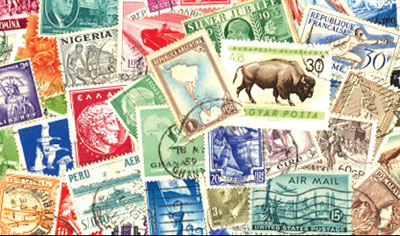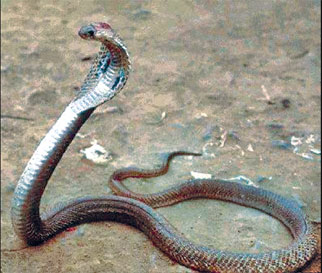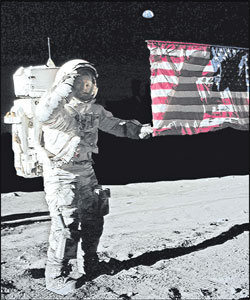
History of the stamp
Winner:
Stamp collecting is a popular hobby among schoolchildren. However, do
we know the origin of this most interesting hobby?

The first stamp was introduced by Sir Rowland of England. He was born
on December 3, 1795. He was a school teacher at a British school. Later
he worked as a government postal officer. He also introduced the concept
of the modern postal service.
On May 6, 1840, the first stamp of the world was introduced. It
carried the picture of Queen Victoria of England. Its value was one
penny.
The first postage stamp of Sri Lanka was issued on April 1, 1857. It
too displayed the head of Queen Victoria. It was printed on a special
paper. The value of this stamp was 6 pence. In 1875 six other postage
stamps were issued in various denominations. At that time a pair of
scissors was used to cut stamps because there weren’t any machines to
perforate the edges of stamps to make it easy to separate them.
Gayan Jayaratne,
Grade 10,
Sussex College,
Kurunegala.
The problem of garbage disposal
Winner:
 Garbage
disposal has become a huge problem for urban development authorities.
Each day tons of garbage are thrown from our homes, hotels, restaurants,
markets, offices, factories and so on. The authorities have to find
dumping sites to dispose of the garbage collected each day. Garbage
disposal has become a huge problem for urban development authorities.
Each day tons of garbage are thrown from our homes, hotels, restaurants,
markets, offices, factories and so on. The authorities have to find
dumping sites to dispose of the garbage collected each day.
When the garbage is thrown into a particular site and the stench
starts to spread, people who live in and around that area start to
complain and protest. No one likes to live next to a garbage dump. Then
the authorities have to find alternate dumping sites. Sometimes the
rotting garbage has to be transported once again and dumped on the new
sites.
However, no sooner the garbage compactors are sighted, the public
start their protests and demonstrations. Sometimes even the drivers,
labourers and officials are attacked. As a result of such disputes
garbage is eventually not collected on a regular basis. People then
start to throw their rubbish on road sides. Crows, stray cattle and dogs
throng these places, looking for food. They tear the bags and scatter
the rubbish all over the roads. The once beautiful environment becomes
an eyesore.
G.B. Apeksha Rathnamali,
Grade 8,
G/Sri Devananda Vidyalaya,
Ambalangoda.
Life and the ozone layer
Winner:
The Earth is perhaps the only planet in our solar system that has
life on it. Other planets are being explored, but none have shown signs
of any life on them. Even for life to exist on Earth, there has to be a
way of preventing the strong UV (Ultra Violet) rays of the scorching Sun
from reaching it. This is done by the ozone layer. Do you know what it
is?
The ozone layer is a thick gas consisting of three oxygen atoms. Its
scientific symbol is O3.The ozone layer has developed naturally to
protect life on Earth. However, due to various human activities, the
ozone layer has been damaged today. This has happened as a result of
various harmful gases and substances being released to the environment.
Some examples of them are R22 and CFC.
If the ozone layer is damaged very badly, the Sun's rays will reach
the Earth directly and destroy life on this planet.
In order to stop this, people should use only ozone friendly
products.
After scientists discovered that the ozone layer needed to be
protected, they took various steps to enlighten the people about the
danger of destroying it. One of the measures taken was the signing of
the ‘Montreal Protocol.’ It was first signed in the city of Montreal in
Canada on September 16, 1987. It encourages countries to phase out the
production (consumption) of ozone depleting chemicals and resort to
using ozone friendly substances.
About 191 countries have already signed it. September 18 was
proclaimed the ‘International Day for the Preservation of the ozone
layer’, on December 19, 1994 by the United Nations General Assembly to
commemorate the day on which the ‘Montreal Protocol’ was signed.
Now many countries have understood the importance of protecting the
ozone and they are using more ozone friendly products.
Today many products we use, such as refrigerators, air-conditioners
and other products have labels denoting that they are ozone friendly or
CFC free.
We have not yet reached dangerous levels in ozone damage . The
drastic effects the entire world could face from such destruction have
been averted. For the moment but we still have to face a certain amount
of environmental issues due to the development of a hole in the ozone
layer .
The world is paying attention to this problem and so there is still
some hope, but only if we take care to protect it. So, let's take steps
to protect the ozone layer and prevent the destruction of life on Earth!
Janani Randhula Gajadheera,
Willesden College International,
Battaramulla.
A deadly animal defence
Winner:
Animals resort to various forms of defensive actions to protect
themselves from predators.
 Poison
is one form of defence and it helps many animals survive in the wild.
Some animals use poison not only to defend themselves but also to
capture prey, the animals they eat as food. Poison
is one form of defence and it helps many animals survive in the wild.
Some animals use poison not only to defend themselves but also to
capture prey, the animals they eat as food.
Rattle snake for example, have special sacks in their cheeks. A
poisonous liquid called venom is stored in these sacks. When a rattle
snake bites an animal the venom shoots through the snake's fangs. It
goes into the prey and soon the prey dies. The snake then swallows the
prey whole, if it is small.
Creatures that can inject venom into others are known as venomous
animals. However, not all venomous animals have fangs. Both venomous and
other animals have different physical attributes that help defend
themselves .The duck-billed platypus for example, has a pointed spur on
each ankle. Bees and fire ants have stingers. These body parts are just
as dangerous as fangs.
Some animals hide poison in their skin or inside their bodies. These
animals are poisonous food . Eating such a poisonous animal will only
make the animal that eats it sick. It may even die from the poison.
There are about 500 different kinds of venomous snakes in the world.
But most of them such as the King Cobra try to avoid humans. In
Australia, a snake called the inland taipan hides in rat burrows, rock
openings or cracks in the soil.
The inland taipan's venom is the deadliest of any land snake on
Earth. This snake's bite has enough venom to kill 100 people.
Snakes have many ways to warn other animals to stay away. Snakes may
rise up, hiss or rattle their tails to frighten creatures too large to
eat. But most snakes prefer to slither away. Even if a snake bites it
may not use its deadly liquid.
Once the venom is used up, it may take several months to make more
venom. During that time, the snake can no longer capture prey.
Dewmini Harindi,
Grade 7,
WP/Ng Seventh Day Adventist High School,
Kandana.
A great astronaut
Winner:
Born in Wapakoneto Ohio on August 5, 1930 the late Neil Armstrong was
the first person to set foot on the moon. He became interested in
aviation as a child and obtained a pilot's licence at the age of 16. He
had a mind that absorbed things like a sponge.

Neil Armstrong became a Navy pilot of the United States Navy and flew
combat mission in the Korean War. Then he served as a test pilot in the
National Advisory Committee for Aeronautics (NACA). He served as the
project pilot in many aircraft.
In 1947, he began studying Aerospace Engineering at Purude University
where he graduated with the Bachelor's degree in Aeronautical
Engineering. He flew over 900 aircraft until he was selected to become
an astronaut.
When Armstrong was asked, if he was interested in joining the
astronaut corps without hesitation he said ‘Yes’ and accepted the post
of Commander of Apollo II. It was the first moon landing mission.During
the Apollo II launch, Armstrong's heart had reached the top rate of log
beats per minute it is said. When the ‘Eagle’ landed on the moon
Armstrong and his colleagues Edwin ‘Buzz Aldrin’ and Michael Collins
celebrated their victory with a handshake.
Armstrong was the first to come out of the lunar module. He had
looked into the black space and grey rocks before slowly moving down the
ladder to place his foot on the surface of the moon on July 21, 1969.
Then he said the following words, which has become famous today.
‘That's one small step for a man, one giant leap for mankind.’Three
hundred and twenty thousand kilometres away from the Earth, people
watched Neil Armstrong on television.
The global audience at that moment was estimated at nearly 5
million.About 15 minutes after taking the first step, he planted the
American flag on the moon. He also unveiled a plaque bearing President
Nixon's signature. Armstrong spent his first few minutes on the moon
taking photographs, and soil samples for NASA's future experiments.
The famous astronaut received many honours and awards including the
Presidential Medal of freedom, the Congressional Spare Medal of Honour
and the Collier Trophy from the National Aeronautics Association.
Throughout the United States there are more than dozens of high schools
named in his honour.
He is a great American astronaut, test pilot, university professor
and United State Naval Aviator. His entry to the moon is a milestone and
a historic moment in space theory of the world.
Even though the world said ‘good bye,’ to Neil Armstrong on August
25, he will continue to live in the hearts of millions of people all
over the world because of his heroic moon walk.
Saheer Ahamed Nisfer,
Grade 10A,
Zahira College, Matale.
Seasons in Sri Lanka
Seasons change because of the rain, wind, clouds and snow. There are
two seasons in Sri Lanka. They are the dry season and the wet season. In
the dry season, there is no rain. All trees and grass die. All the
waterways dry up and sometimes animals die without water. Farmers too
suffer without rain.
In the wet season, we get plenty of rain. Two monsoons bring in the
showers of rain. Everything becomes fresh and green once again. All the
waterways fill up with water. The farmers are very happy because they
could cultivate. Young animals and trees grow fast during the wet
season.
G. Dineth Devinda,
Grade 6D,
Mahinda Rajapaksa College,
Homagama.
[Your poems ]
Life is sweet
Though many obstacles we meet.
Repentance, sadness, depression
Trials, tribulations and defeats.
Though you face all these difficulties,
Never abandon yourself
To be depressed and worried
If you can face these challenges,
With an energetic mind, strong will and courage
You can reach any goal
And make your life sweet!
Himesha Prabodini Alahakoon,
St. Thomas Girls’ High School,
Matara. |


